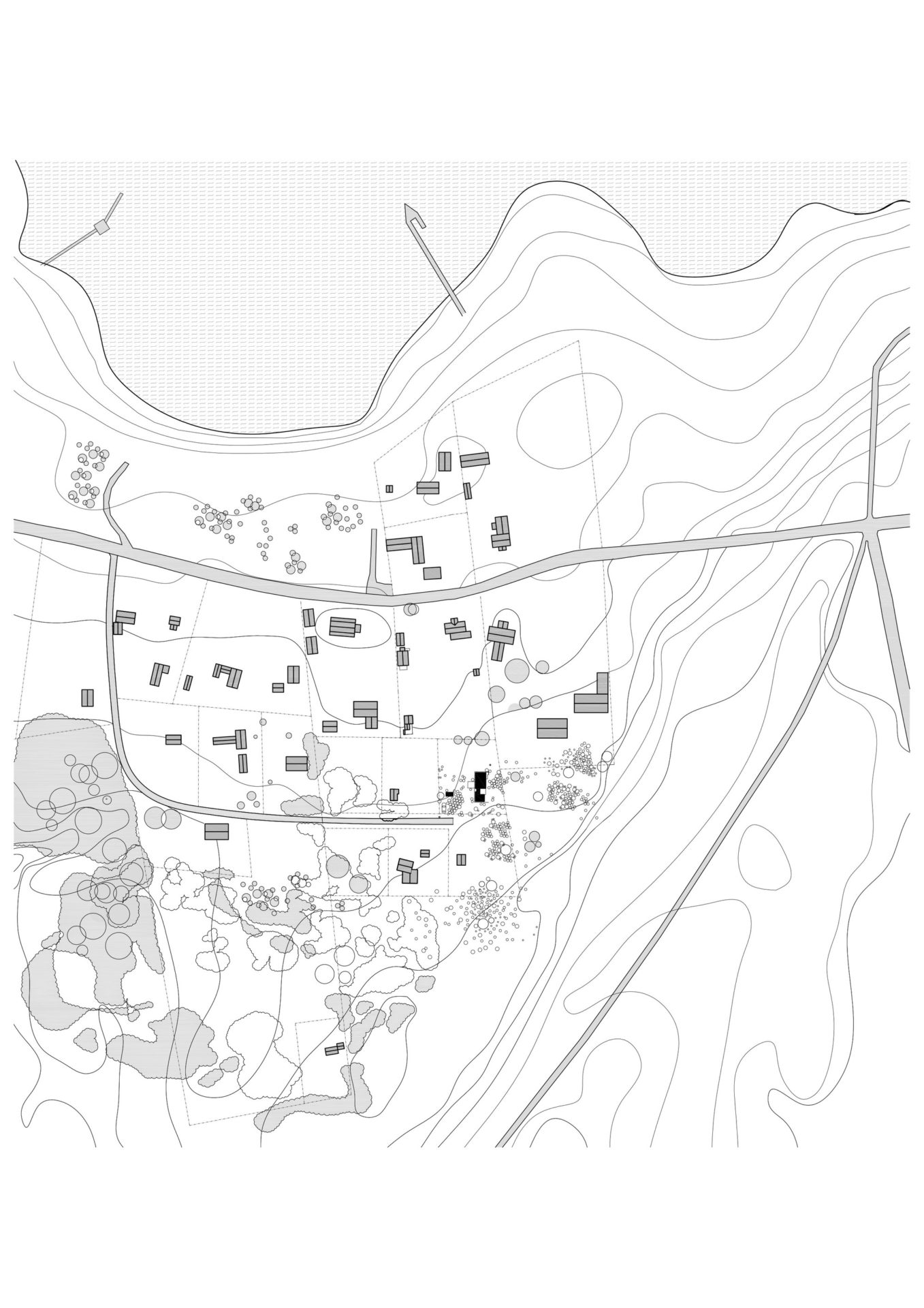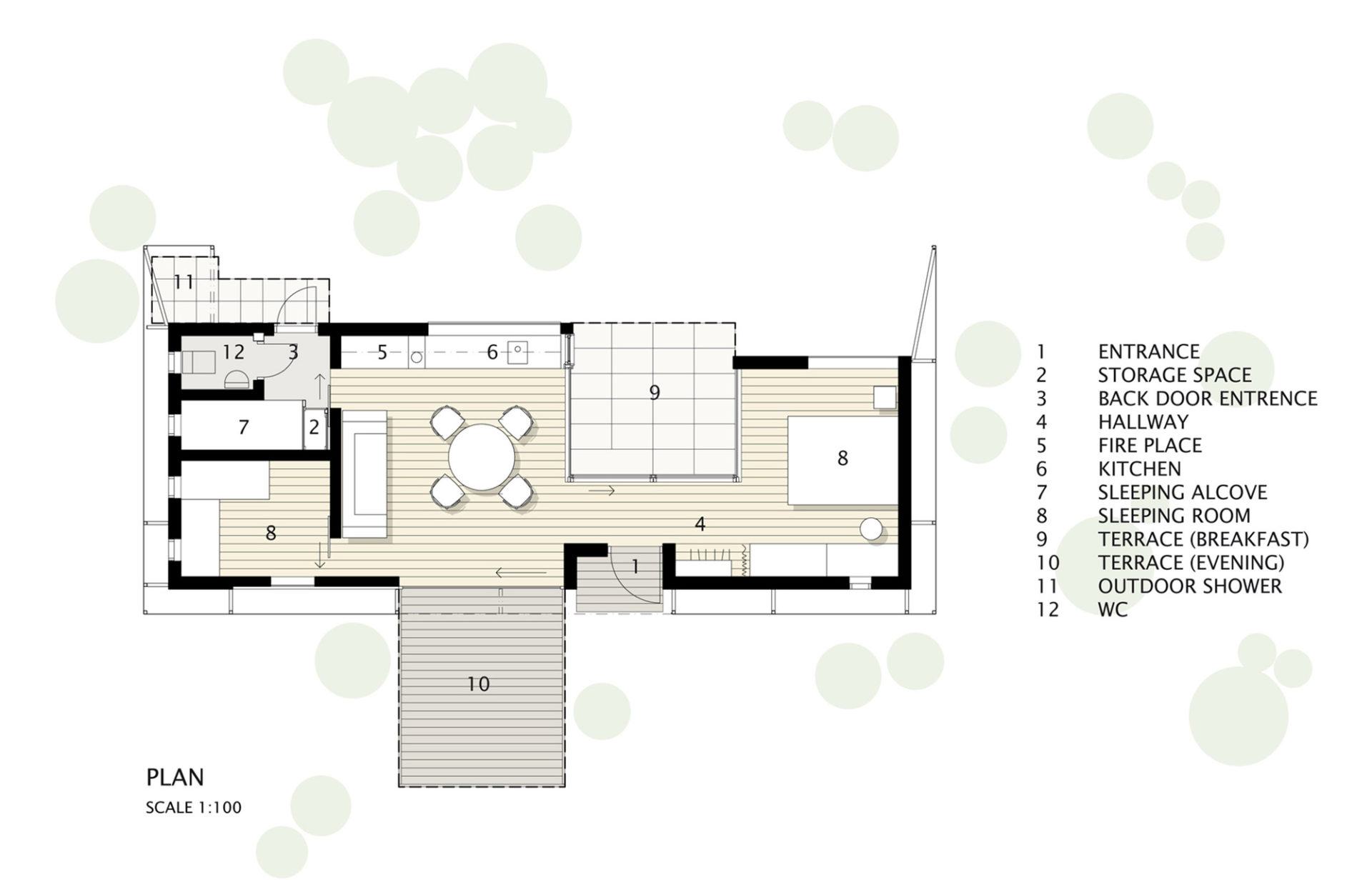Featuring a sublime mix of contemporary and classic finishes, the Juniper House is actually a small weekend cottage that was built in 2007 within a juniper grove. The house was designed by Murman Arkitekter and offers no more than 538 square feet of living space. Towards the yard, the architects implemented a wall of glass that rises from the floor towards the ceiling. Standing inside, the residents are able to enjoy the illusion of being outside due to the incredible transparency.
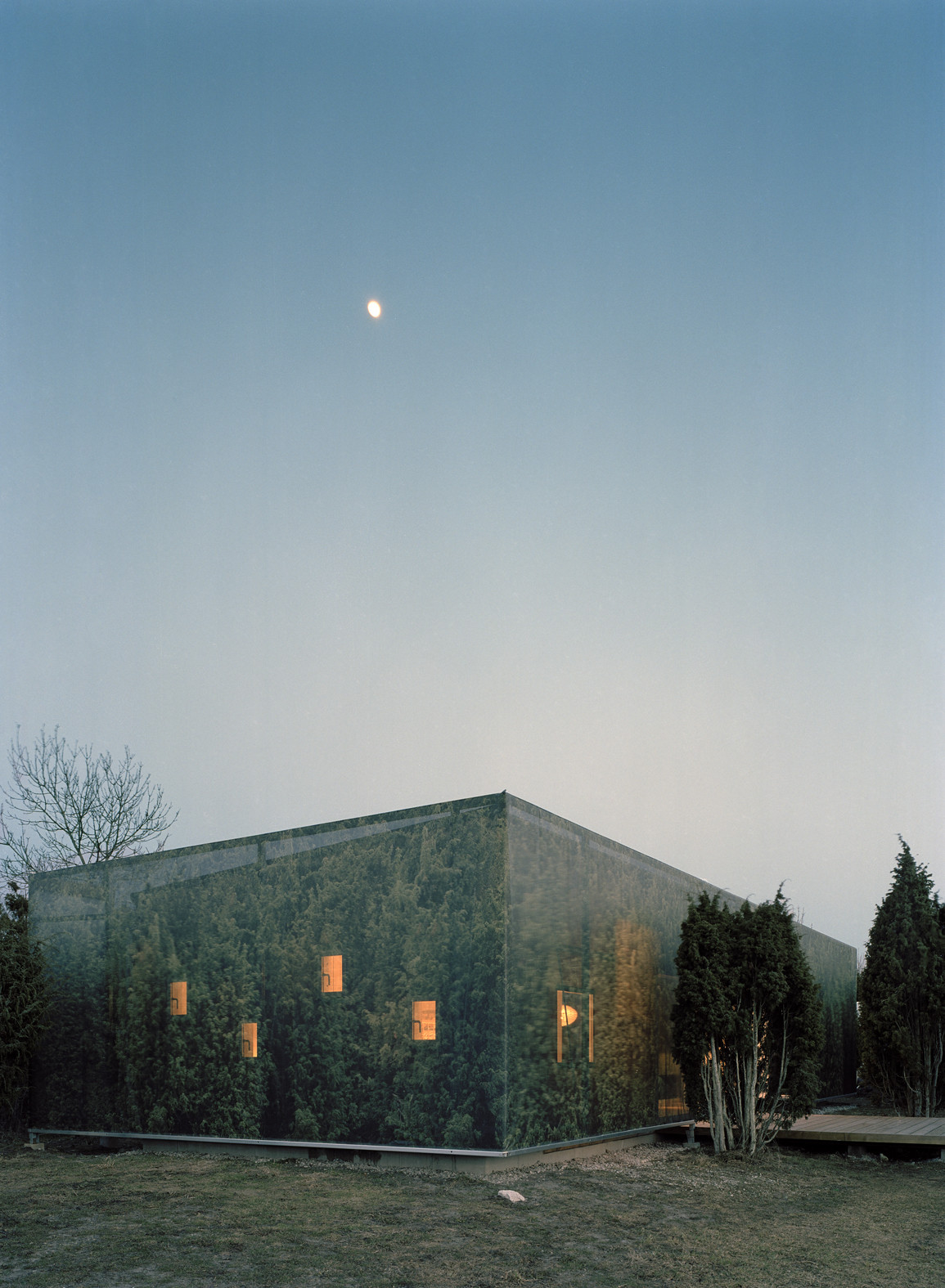
The master bedroom and the kitchen are separated by a terrace made out of locally sourced white limestone. Speaking of the kitchen, it also acts as a living room and is linked to the terrace thanks to wide sliding doors. Being able to socialize and have fun is a very important part of day-to-day life for the residents, but privacy was also a very important factor to take into consideration.
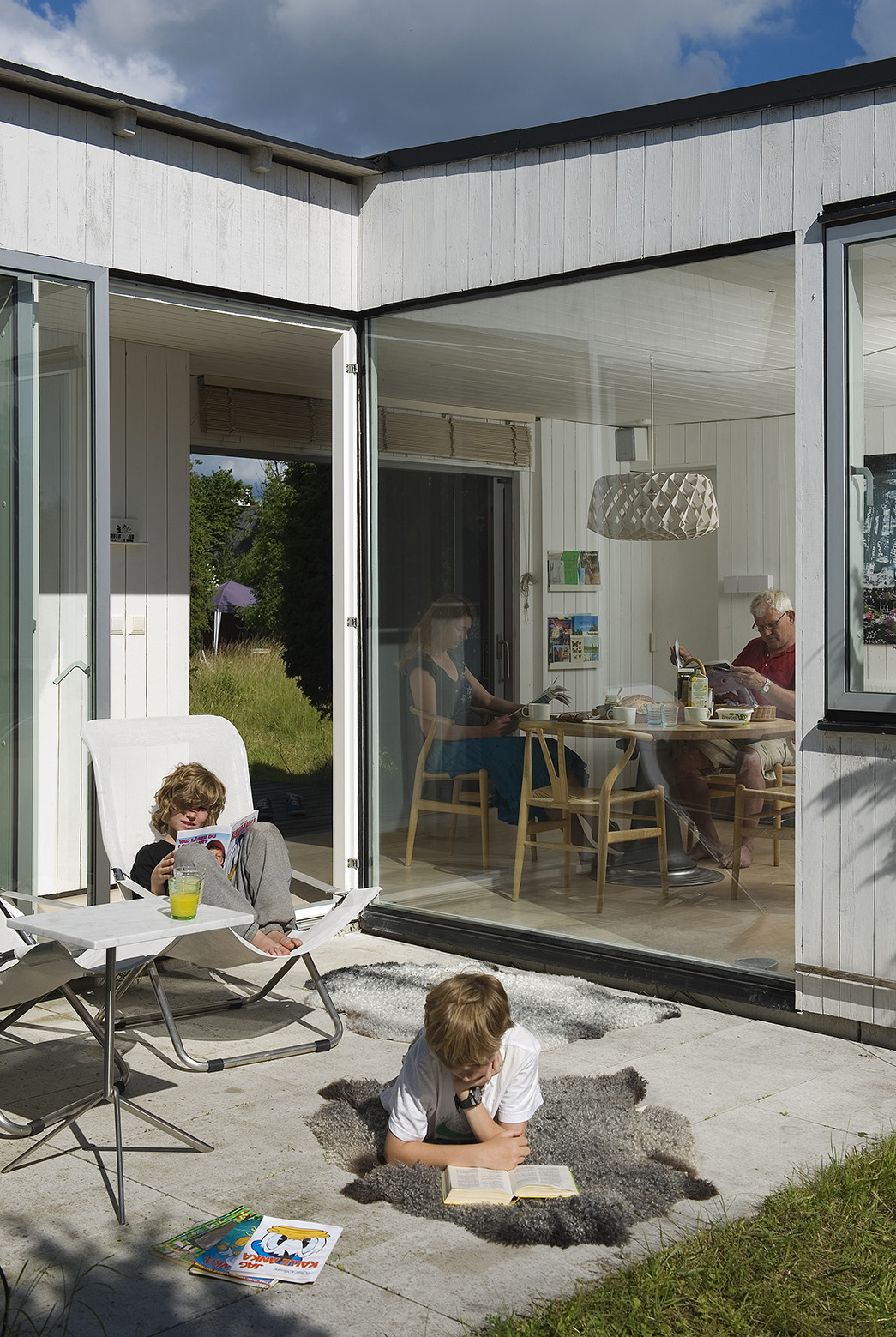 Therefore, the Juniper House flaunts a semi-private afternoon sun terrace that faces the lawn, while a private breakfast zone faces east in order to benefit the most from the morning sun.
Therefore, the Juniper House flaunts a semi-private afternoon sun terrace that faces the lawn, while a private breakfast zone faces east in order to benefit the most from the morning sun.
As far as finishes are concerned, the floor is made out of ash wood while the ceilings and walls boast white paint. The kitchen is composed of a concrete board and multiple IKEA parts. One of the kitchen’s highlights comes in the form of a wood burning stove, which was modeled after a 20th century appliances.
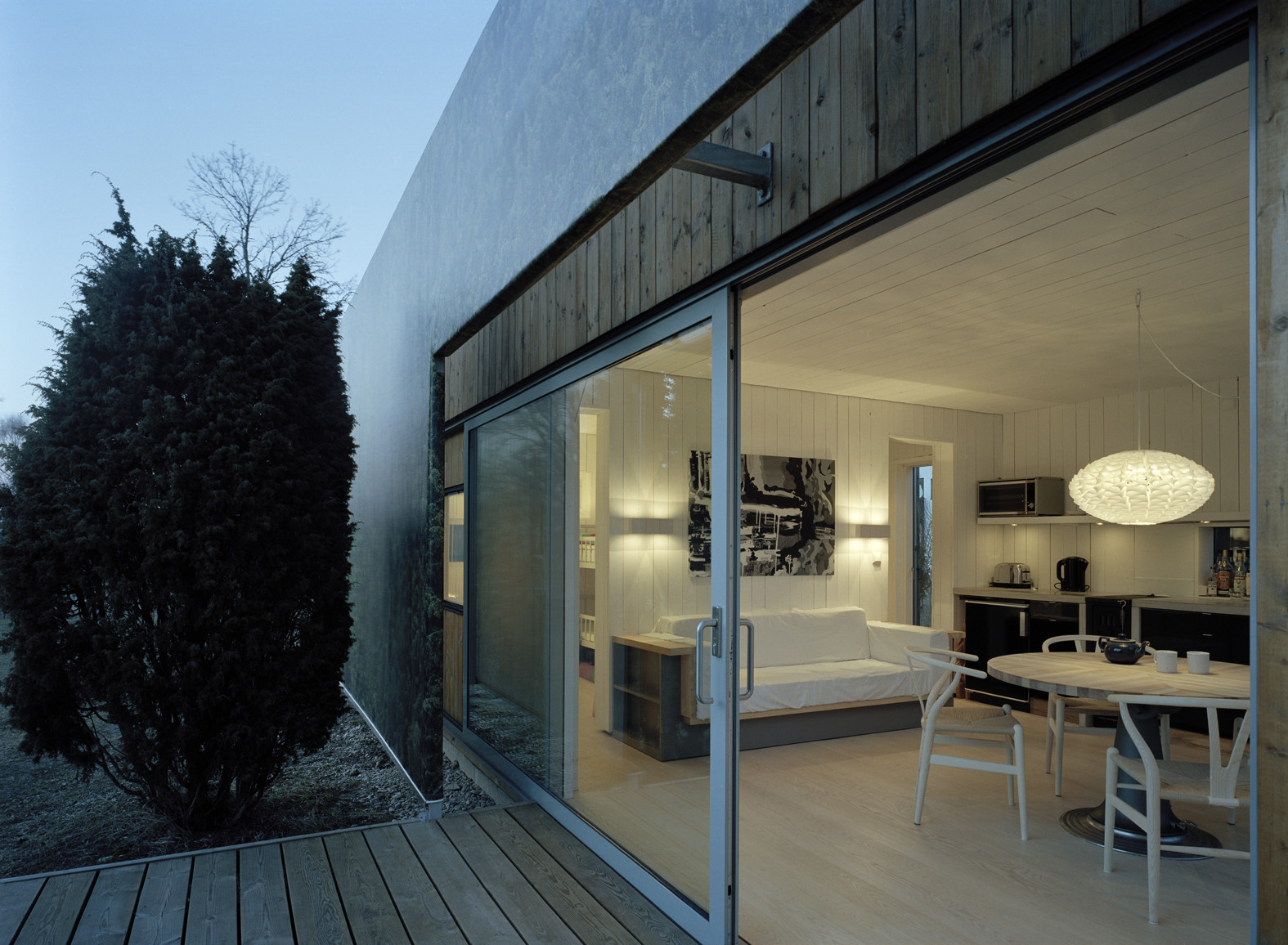
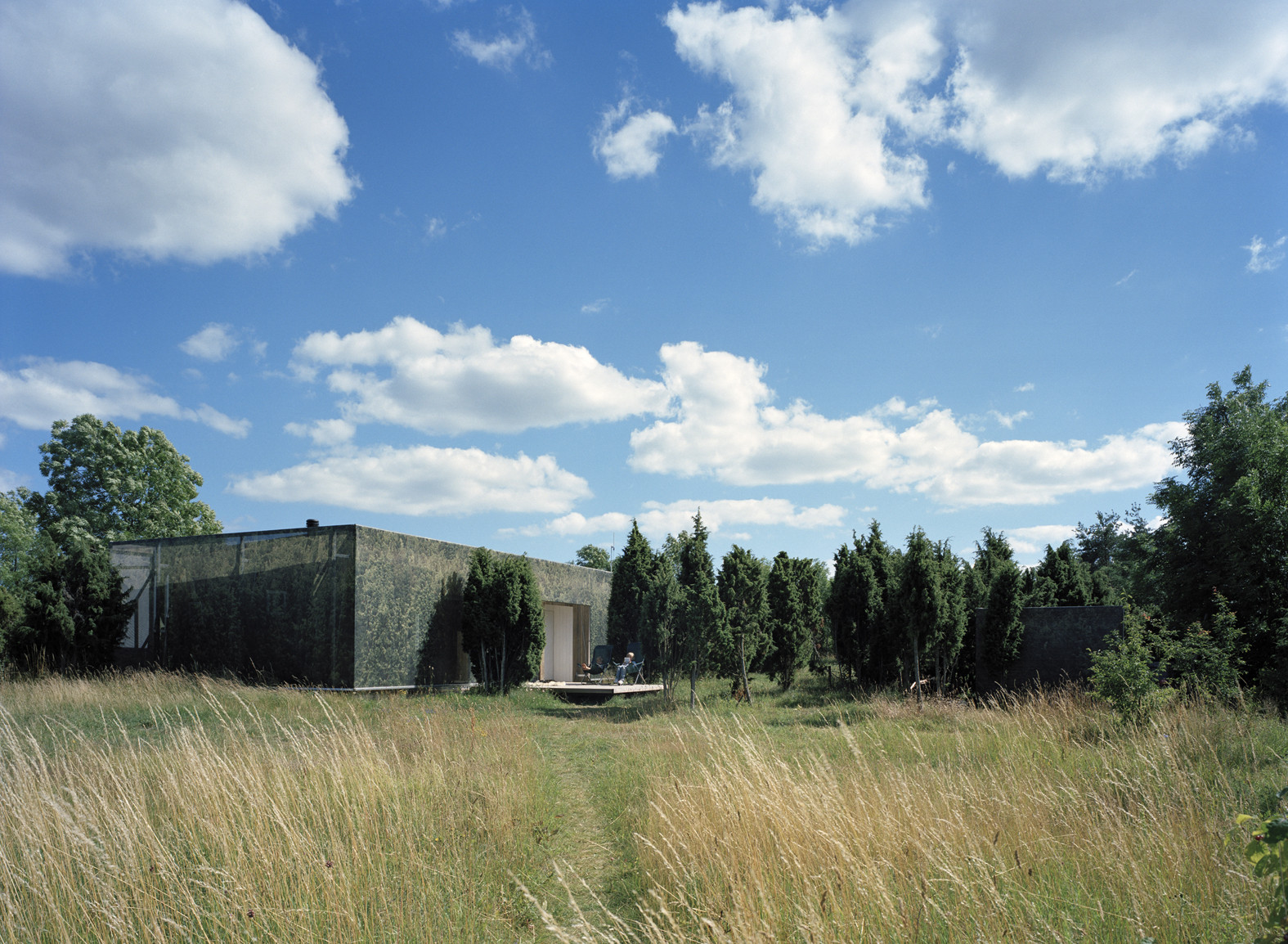
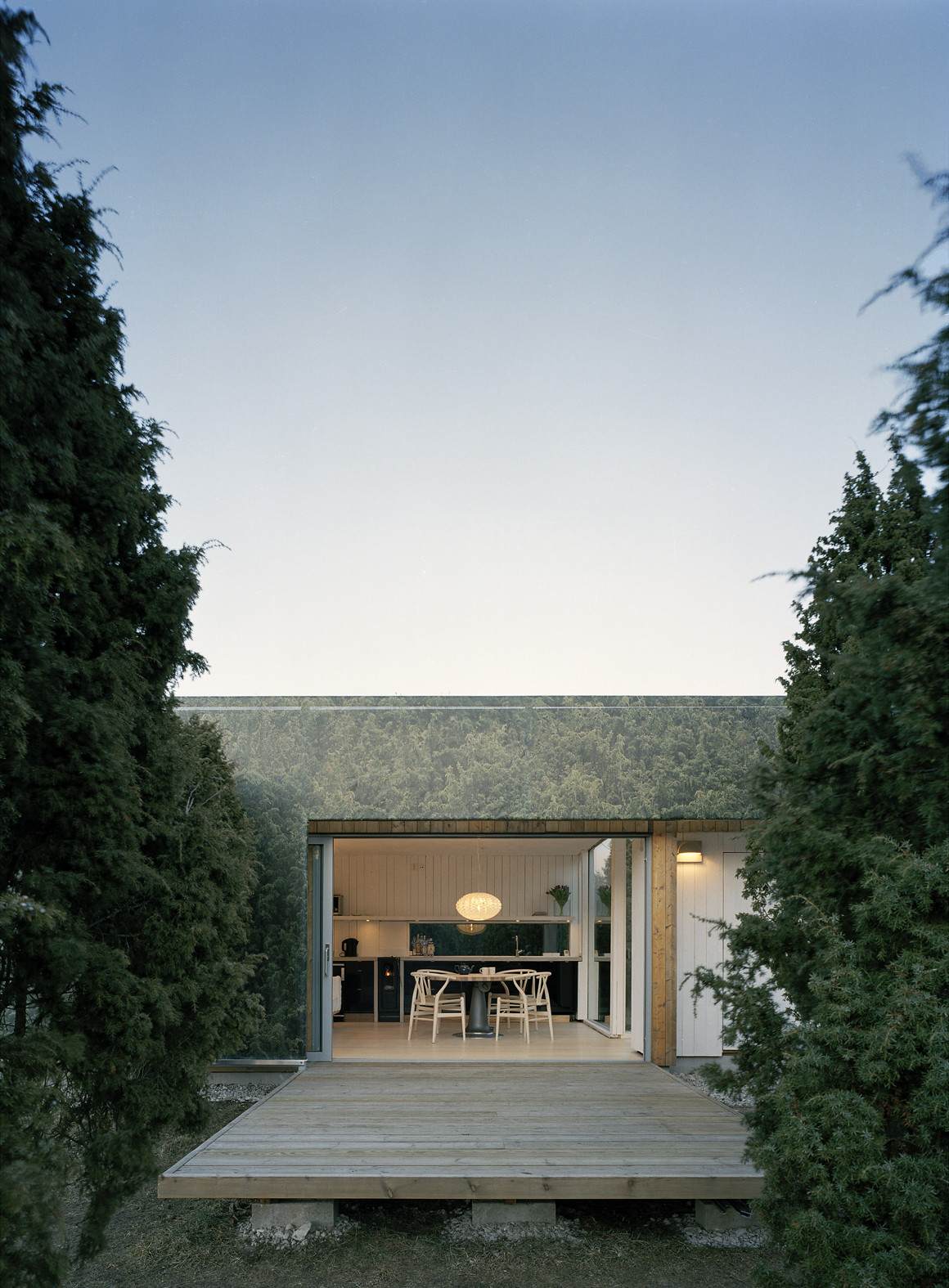
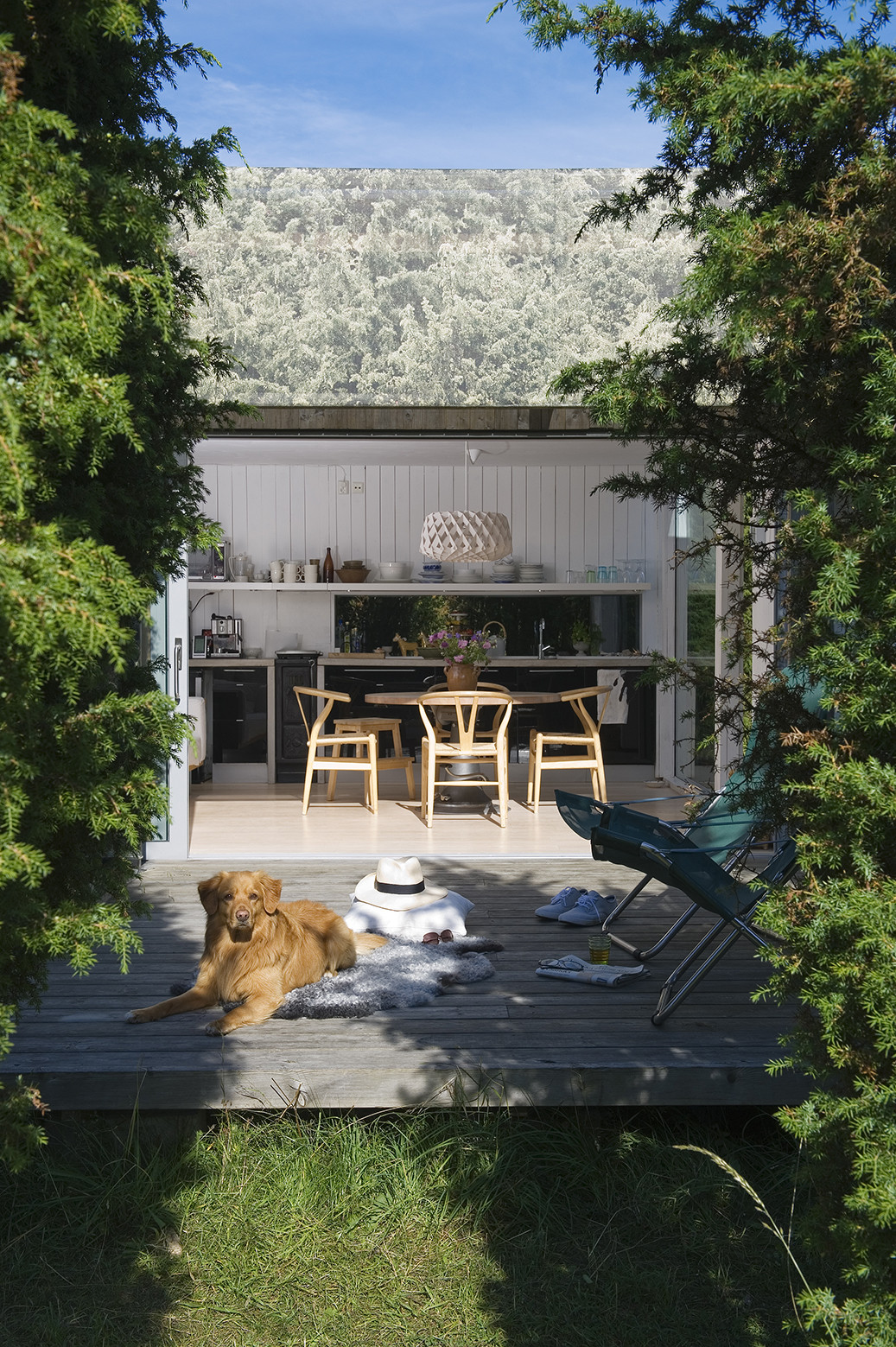
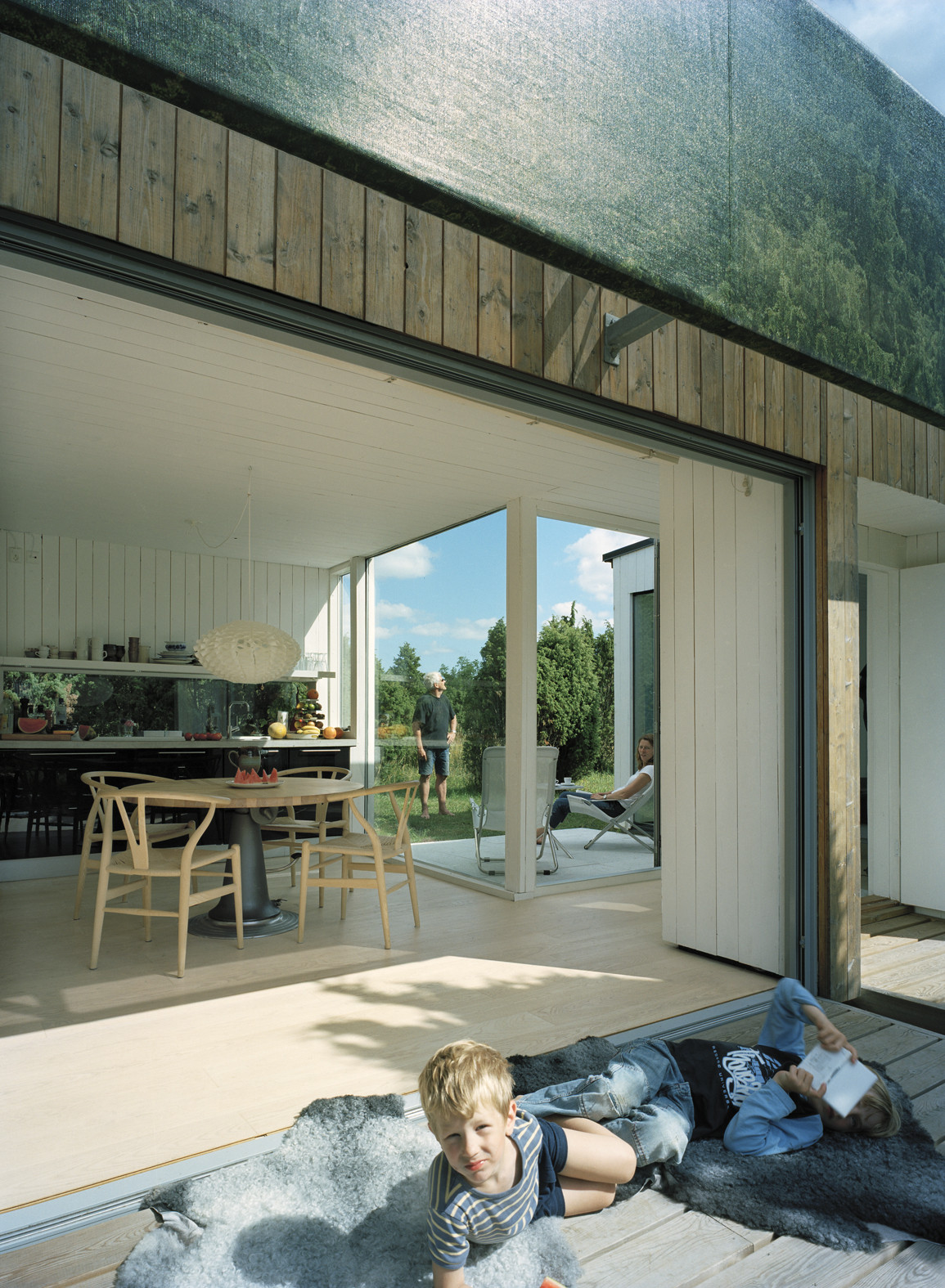
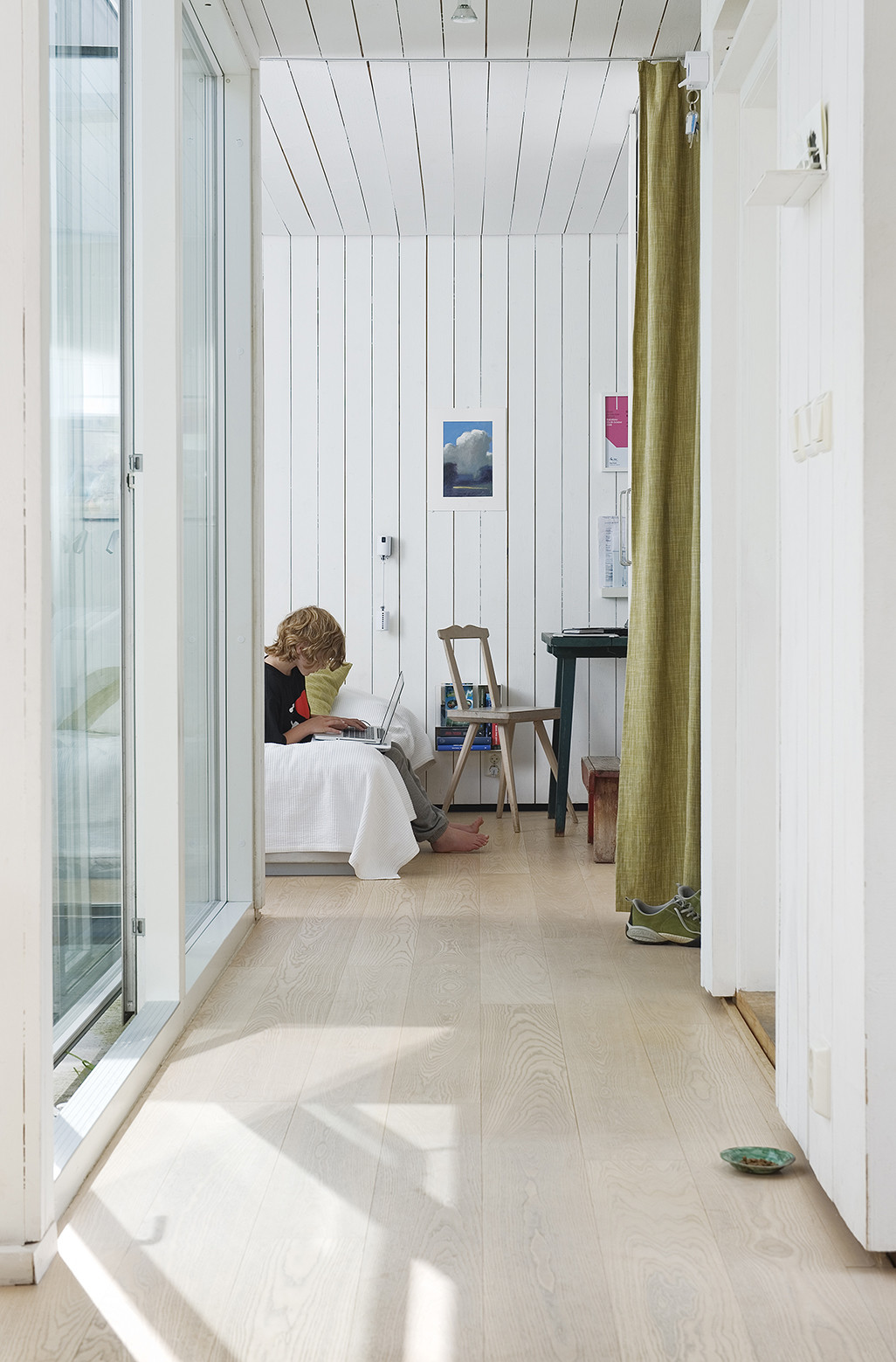
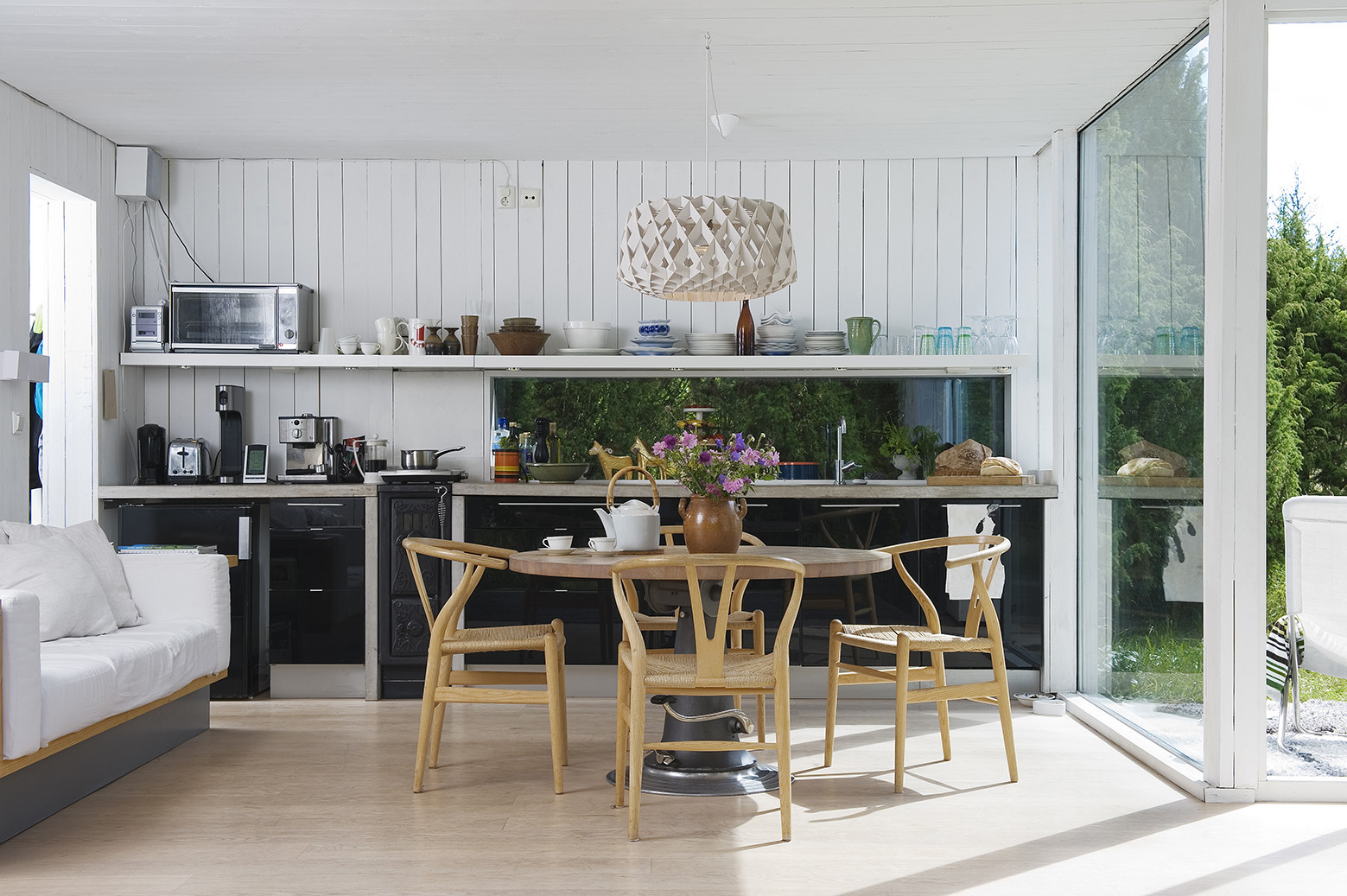
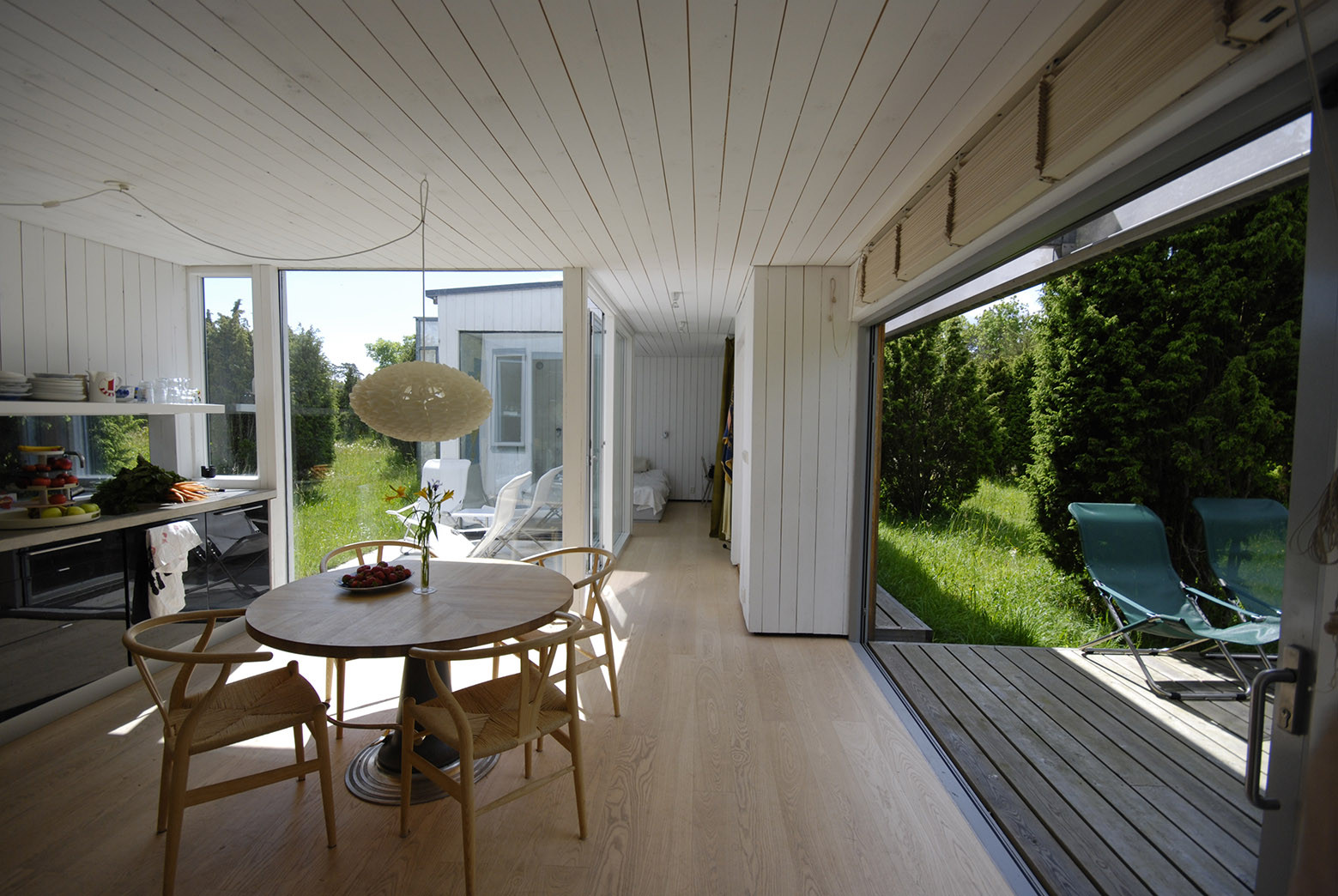
From the architect:
This house is more than a weekend cottage. This house is an experiment. You approach it via a cul-de-sac that ends in a sheep fence towards the open moor. There is a grove of high junipers and a couple of white plastered houses visible. Embedded in a glade 5 meters to the right lies Juniper House. The house is barely visible, like a mirror of its own surroundings.
Juniper house is thought to be experienced as the glade it stands in. The project started with measuring all junipers on the site. The house is placed so you have junipers just a foot from the façade. The original glade was crossed by a natural path through the house to the moor.
A wall of glass from ceiling to floor stands towards the minimal yard. From the interior you have a strong feeling of being in the nature. Both light and the path “flow” through the house and a terrace of white local limestone separates the kitchen from the master bedroom.
Thanks to the glass partitions and the white interior walls the small court yard is experienced as a part of the inside. From the master bedroom there is a lot of sky visible, due to the significantly sized glass partitions, and through the low placed window you can se wild rabbits in the morning. There is only a curtain separating the bedroom from the rest of the house.
The centrally placed kitchen works as a living room. The wide sliding doors towards the terrace and the enclosed yard make it possible to have good contact with the nature during all types of weather. The sliding glass partitions also works as a temperature regulator while minimising draught problems.
All the members of the big family have summer cottages in the neighbourhood and close contact with the family was crucial, but there was also a need of a private zone.
Towards the lawn and the other family members lies the afternoon sun terrace. The platform acts as a bridge towards the rest of the family and is also a half-private zone. Towards east facing the morning sun for breakfast you have the private breakfast zone.
The façade is a playful comment to the Gotland authority’s ambition to not let modern architecture be visual in the landscape. It is also an experiment and investigation in what you see and do not see of a house and how this affects you and how you experience colour, texture, surface, material, transparency, inside contra outside light on and through the façades.
The slow growing junipers that enclose the house are green throughout the whole year. A photo of the existing junipers was used as the base for the tailor-made cloth that is 35 metres wide and 3 meters high and wrapped onto tree sides of the house The netvinyl cloth is put on a galvanized steel construction at a distance of 40 centimetres from the façade. On the north and south side of the house the cloth is extended a few extra meters for privacy and to hide the outdoor shower from the neighbours. The wooden facade is treated with a combination of turpentine, tar and linseed oil.
The sliding glass parts are clad with aluminium from Velfac and full aluminium from Scücho. The large glass partitions is insulated in the same plane as the façade elements fixed to the angled profiles made of aluminium.
The floor is ash, oiled with white pigment. The walls and the ceiling are painted white and for the kitchen we have used a concrete board from a local factory in Boge, Gotland. The other parts of the kitchen are from IKEA. The wood burning stove is a model from the early 20th century, and is only 30 centimetres wide and is the only heat source in the kitchen. The sofa is our own design and the central table is made of massive ash assembled on a drawing board stand. The chairs are the classic Y-chair designed by Hans Wegner in 1950.
The walls are isolated with 120 mm mineral wool. The ground is a concrete plate. The roof is flat clad with tar paper.
Architects: Murman Arkitekter
Location: 623 69 Katthammarsvik, Sweden
Architect in Charge: Ulla Alberts, Hans Murman architects SAR/MSA
Client and builders: Ulla Alberts, Hans Murman
Area: 50.0 sqm
Project Year: 2007
Photographs: Åke E-son Lindman, Göran Uhlin
